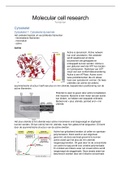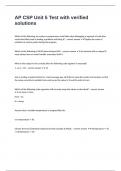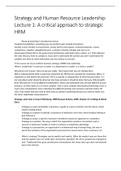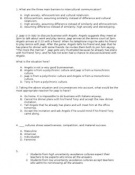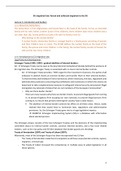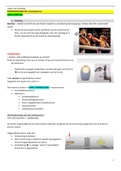CH 8+9 - CAPITAL BUDGETING
Capital Budgeting Techniques
1. Net Present Value
2. Internal Rate of Return
3. Modified Internal Rate of Return
4. Probability Index
5. Payback Period
6. Discounted payback period
7. Accounting Rate of Return
8. Economic Value Added
1. NET PRESENT VALUE (NPV)
- Principle – takes time value of money into account
- WACC – minimum rate company expects to return when investing in a project.
Steps:
1. Estimate project’s future cash flows
2. Discount cash flows – at company’s Required rate of return (WACC)
3. Deduct cost of investment – initial cash outflow
4. Positive NPV -> Accept Negative NPV -> Reject
- Choose project – with highest NPV
Calculation of NPV
CF0 – Initial investment/cost (make negative)
CF1 – Cash flow year 1
CF2 – Cash flow year 2
I/YR – WACC (Req rate of return)
I/YR – 1
NPV = xxx
NPV Profile
Sensitivity of NPV – to a change in discount rate
Example: Receive R110 in one year – how much must I invest?
FV - -R110 (receivable amount)
I/YR – WACC
P/YR – 1
PV = Investment amount at beginning
1
, 2. INTERNAL RATE OF RETURN (IRR)
Discount rate at which – PV of net future cash flows = cost of investment (Rate when
NPV = 0)
Calculation
CF0 -10 000 (Initial cost of
investment)
CF1 8 000
CF2 6 000
P/Yr 1
2nd F IRR/YR 27.18%
Choose project with – highest IRR (must be >WACC)
IRR > WACC – Accept project, higher return than cost of financing
Disadvantage – Ignores size of initial investment of project (look at %)
Advantage – easy to understand %. Don’t need WACC, only to evaluate
3. MODIFIED INTERNAL RATE OF RETURN (MIRR)
Conflict – mutually exclusive projects
NPV – reinvestment of cash inflow at WACC (Preferred method)
IRR – Assume reinvestment of cash inflow at IRR
MIRR – assume reinvestment at WACC
Reinvestment of cash flows – when project generates cash flows, it’s used by
companies to invest in other projects
Terminal value – value at end of project if cash inflows are reinvested at WACC
MIRR – rate where PV of terminal value = PV of initial outflow
4. PROFITABILITY INDEX (PI)
Measures – project’s returns in relation to its costs (cost/benefit ratio)
Calculation
PV of Future Cashinflows Cost of investment + NPV
PI = PI =
PV of cost of investment C ost of investment
>1 – Accept <1 - Reject
2
Capital Budgeting Techniques
1. Net Present Value
2. Internal Rate of Return
3. Modified Internal Rate of Return
4. Probability Index
5. Payback Period
6. Discounted payback period
7. Accounting Rate of Return
8. Economic Value Added
1. NET PRESENT VALUE (NPV)
- Principle – takes time value of money into account
- WACC – minimum rate company expects to return when investing in a project.
Steps:
1. Estimate project’s future cash flows
2. Discount cash flows – at company’s Required rate of return (WACC)
3. Deduct cost of investment – initial cash outflow
4. Positive NPV -> Accept Negative NPV -> Reject
- Choose project – with highest NPV
Calculation of NPV
CF0 – Initial investment/cost (make negative)
CF1 – Cash flow year 1
CF2 – Cash flow year 2
I/YR – WACC (Req rate of return)
I/YR – 1
NPV = xxx
NPV Profile
Sensitivity of NPV – to a change in discount rate
Example: Receive R110 in one year – how much must I invest?
FV - -R110 (receivable amount)
I/YR – WACC
P/YR – 1
PV = Investment amount at beginning
1
, 2. INTERNAL RATE OF RETURN (IRR)
Discount rate at which – PV of net future cash flows = cost of investment (Rate when
NPV = 0)
Calculation
CF0 -10 000 (Initial cost of
investment)
CF1 8 000
CF2 6 000
P/Yr 1
2nd F IRR/YR 27.18%
Choose project with – highest IRR (must be >WACC)
IRR > WACC – Accept project, higher return than cost of financing
Disadvantage – Ignores size of initial investment of project (look at %)
Advantage – easy to understand %. Don’t need WACC, only to evaluate
3. MODIFIED INTERNAL RATE OF RETURN (MIRR)
Conflict – mutually exclusive projects
NPV – reinvestment of cash inflow at WACC (Preferred method)
IRR – Assume reinvestment of cash inflow at IRR
MIRR – assume reinvestment at WACC
Reinvestment of cash flows – when project generates cash flows, it’s used by
companies to invest in other projects
Terminal value – value at end of project if cash inflows are reinvested at WACC
MIRR – rate where PV of terminal value = PV of initial outflow
4. PROFITABILITY INDEX (PI)
Measures – project’s returns in relation to its costs (cost/benefit ratio)
Calculation
PV of Future Cashinflows Cost of investment + NPV
PI = PI =
PV of cost of investment C ost of investment
>1 – Accept <1 - Reject
2


